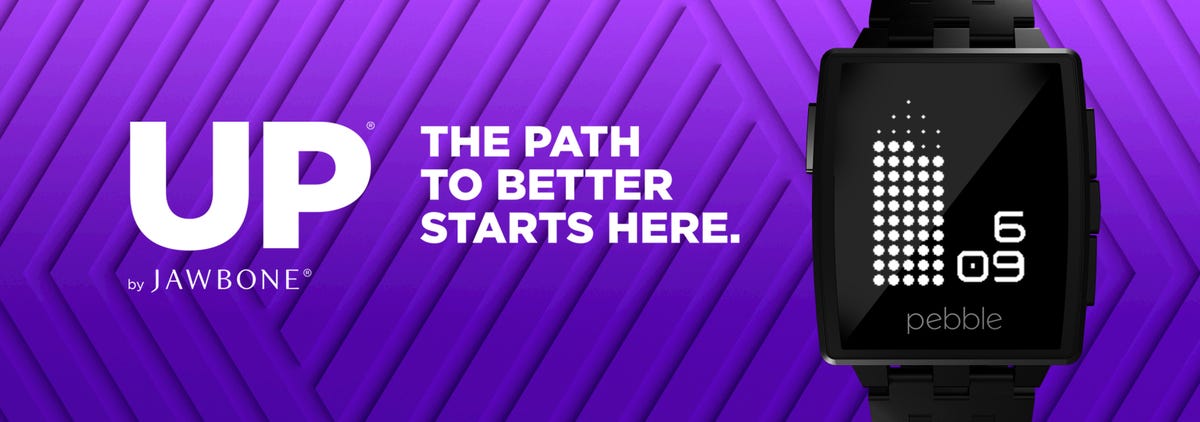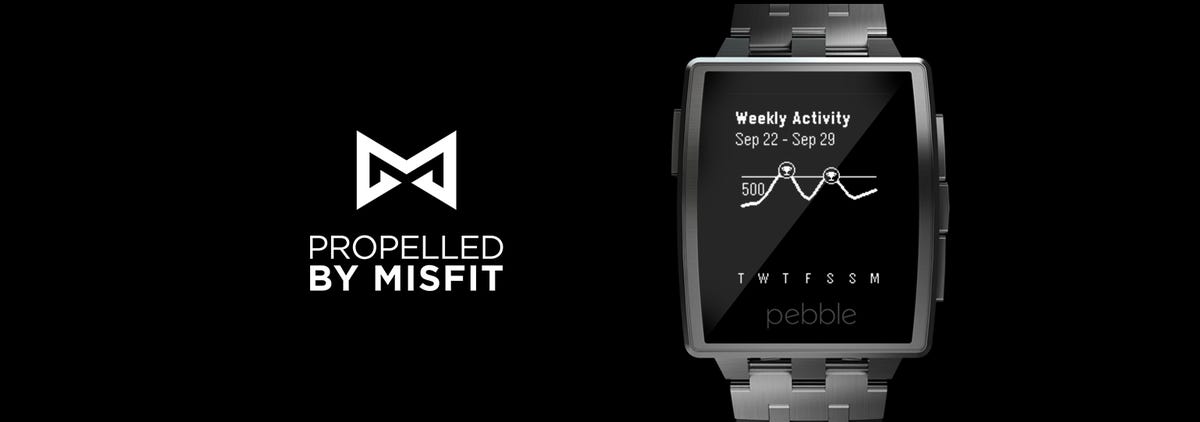
Jawbone
The wearable wrist revolution thus far has been about smartwatches and fitness bands, but the two don’t always overlap. In fact, it’s hard to find one device that does both well.
The Pebble smartwatch and Pebble Steel had aspirations to track fitness, but were never able to do background tracking — an essential feature for counting steps. That’s changed now: Pebble’s latest software release adds true background fitness tracking capabilities, while partnerships with Jawbone and Misfit have resulted in new apps that work on the Pebble to run continuously and track steps and sleep, just like an everyday fitness tracker.
The new apps and software are available today. That’s a big deal: the Pebble has been CNET’s favorite smartwatch, and the Jawbone Up our favorite fitness ecosystem. Does that make the revived Pebble with Jawbone our favorite wearable?
These new apps, and other future apps taking advantage of newly-released developer SDK, tap into the Pebble’s built-in and mostly dormant accelerometer and compass. Different fitness apps are free to use their own algorithms to interpret the data: or, as Eric Migicovsky, CEO of Pebble, explained during a phone call, some are even working to develop non-fitness apps, like one to track epileptic seizures while sleeping. The Pebble will be able to track fitness (or use its compass) while offline and unpaired with a phone, holding up to 140 days of data without syncing. But the initial apps won’t sync with phone apps yet: that feature will be coming soon.


Pebble
A Misfit app was added to the Pebble months ago in mid-June, but that app never ran in the background: it needed to be up and running to work. The new Pebble software update means that, once launched, any app will run while doing other things, and drain no more than half a day of normal use while running continuously. Fitness apps will partially embed themselves into Pebble’s OS, while new custom watchface mini-apps can be used to quickly glance at steps. Some apps will even track specific actions beyond steps: Swim.com’s app measures swim strokes, promising to turn the Pebble into a true pool fitness watch.


Pebble
These new fitness apps sound like they could make regular fitness trackers obsolete. It’s possible, considering that Pebble’s watches are 5 ATM shower- and swim-friendly and have pretty good battery life — not as good as most fitness bands, but better than most other smartwatches. Because the Pebble doesn’t need daily charging, it can be used to track sleep at night.
We’ll need to test how these apps actually work, but these types of cross-wearable partnerships are more important than ever as companies like Google, Samsung and Apple continue to loom with more watches of their own. Fitness watches are becoming increasingly smarter, and smartwatches are getting more serious about adding some basic fitness tracking, too.
All Pebble owners will get these new fitness-tracking upgrades, meaning that there isn’t a new watch. At least, not just yet. Pebble’s also announced a $50 price drop on all models: the original plastic Pebble now costs $99 or £99, and the stainless steel Pebble Steel costs $200 or £179. Pebble will also start being sold in Benelux and Scandinavia, as well as additional US and UK retail stores, with phone network O2 getting the UK exclusive on the cherry-red Pebble.
Will fitness cause a Pebble revival? The venerable smartwatch has been around since mid-2013, seen a redesign in January in the form of the Pebble Steel, but has hung in through many new smartwatch regimes from Samsung, Google, and others. If you liked using a Pebble watch before, you’re more likely to like it now. And if it works as advertised, these new features could make the Pebble the best budget wearable, without contest…at least, for now.



